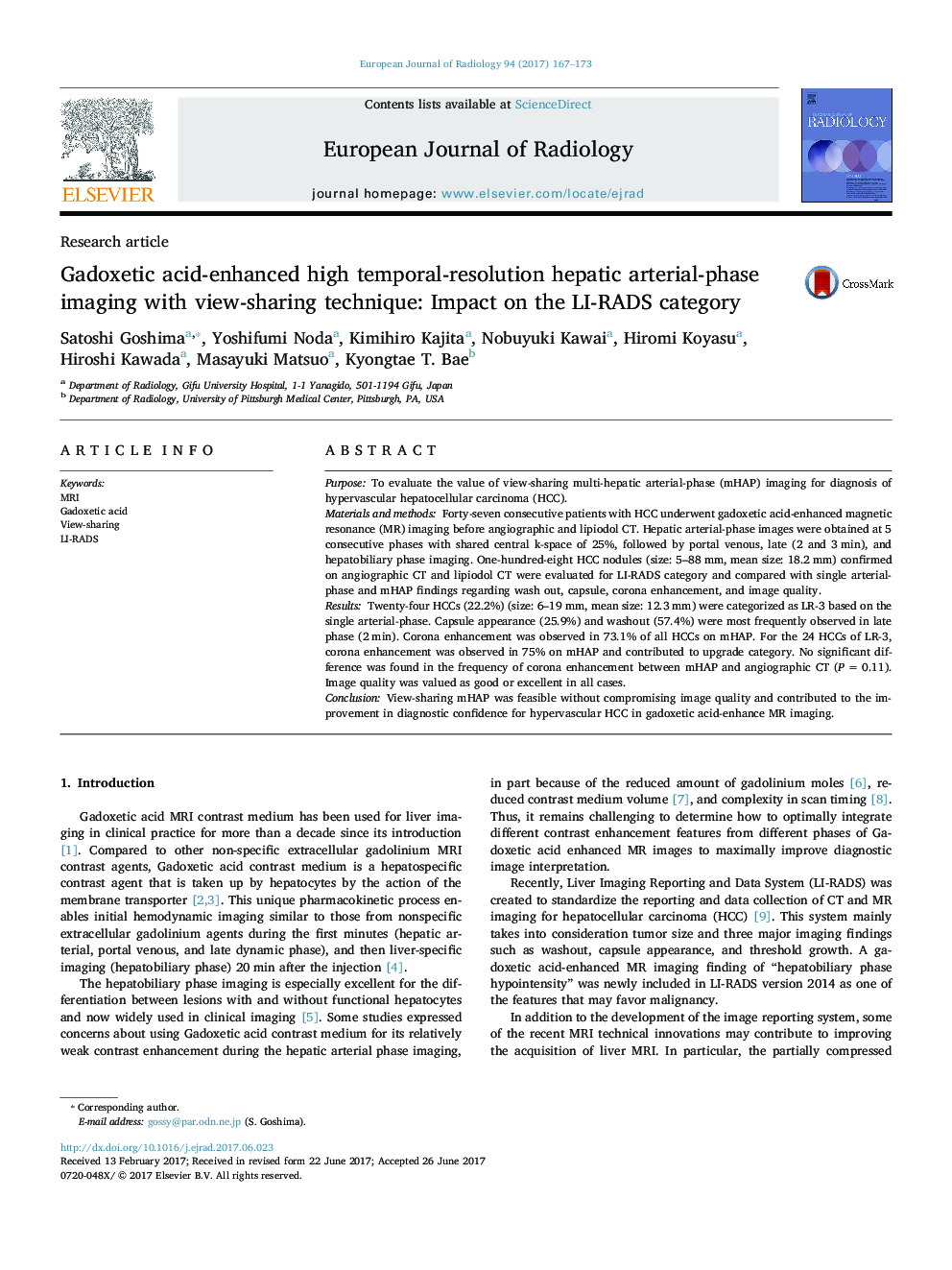| Article ID | Journal | Published Year | Pages | File Type |
|---|---|---|---|---|
| 5726254 | European Journal of Radiology | 2017 | 7 Pages |
PurposeTo evaluate the value of view-sharing multi-hepatic arterial-phase (mHAP) imaging for diagnosis of hypervascular hepatocellular carcinoma (HCC).Materials and methodsForty-seven consecutive patients with HCC underwent gadoxetic acid-enhanced magnetic resonance (MR) imaging before angiographic and lipiodol CT. Hepatic arterial-phase images were obtained at 5 consecutive phases with shared central k-space of 25%, followed by portal venous, late (2 and 3Â min), and hepatobiliary phase imaging. One-hundred-eight HCC nodules (size: 5-88Â mm, mean size: 18.2Â mm) confirmed on angiographic CT and lipiodol CT were evaluated for LI-RADS category and compared with single arterial-phase and mHAP findings regarding wash out, capsule, corona enhancement, and image quality.ResultsTwenty-four HCCs (22.2%) (size: 6-19Â mm, mean size: 12.3Â mm) were categorized as LR-3 based on the single arterial-phase. Capsule appearance (25.9%) and washout (57.4%) were most frequently observed in late phase (2Â min). Corona enhancement was observed in 73.1% of all HCCs on mHAP. For the 24 HCCs of LR-3, corona enhancement was observed in 75% on mHAP and contributed to upgrade category. No significant difference was found in the frequency of corona enhancement between mHAP and angiographic CT (PÂ =Â 0.11). Image quality was valued as good or excellent in all cases.ConclusionView-sharing mHAP was feasible without compromising image quality and contributed to the improvement in diagnostic confidence for hypervascular HCC in gadoxetic acid-enhance MR imaging.
